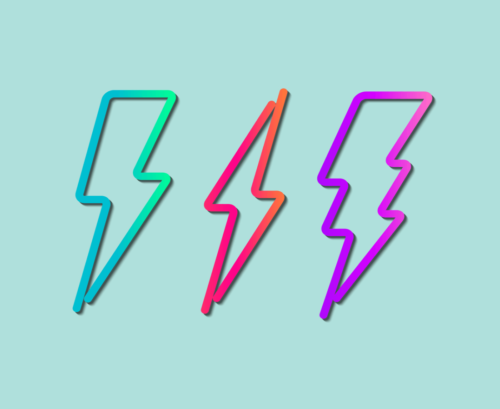
Spot the more unusual signs of a migraine attack with our expert guide and learn about the very latest treatments to relieve your symptoms.
Some of the more common migraine symptoms are all too horribly familiar: a severe headache preceded by an aura (flashing lights and visual disturbance), plus numbness and dizziness as well as vomiting and nausea.
One in 10 people in the world is affected – with the highest prevalence in the US and Europe. Women suffer the most, with one in five females experiencing migraines compared with one in 15 men. Attacks usually begin early in life, but diagnosis can be delayed until your 20s or even 30s. There are also migraine sufferers who have more unusual symptoms that don‘t fit the classic pattern, and this is making the condition harder to diagnose in some people.
Migraine, but not as we know it
Migraine is commonly underdiagnosed for two main reasons. First, people mistakenly believe it always starts as a headache with an aura. That’s not so, says Professor Paul Booton, a GP specialising in migraine at the National Migraine Centre charity.
“In fact, only a third of migraine sufferers experience aura and a small number don’t even experience a headache. The reality is a lot of people just put up with their symptoms, blaming them on a lack of sleep, stress, something they ate, a hangover or sleeping uncomfortably”.
The other problem is that GPs often get little training about treating migraines at medical school since, in a busy curriculum, learning about treating life-threatening conditions such as meningitis are given priority.
“The bottom line is that if you have recurrent headaches severe enough to bring you to a doctor’s surgery, they are probably migraines,” says Paul.
Lesser-known symptoms
Most of us consider a migraine to be a very bad headache (albeit a disabling, lie-down-in-a-dark-room one), so wouldn’t think a migraine could be headache free. Yet sufferers may have other symptoms instead, including abdominal pains, brain fog, pins and needles, sinus issues and, in exceptionally rare cases, temporary paralysis, that are often misdiagnosed as other conditions.
Paul, who has himself experienced migraines since his late teens, is a good example. He rarely has a headache with his migraine attacks, but instead notices cognitive problems and disruptions to his visual field.
“Usually what happens is that I’ll be sitting at my computer and I’ll notice that I have difficulties seeing the screen,” he says. ‘There will be a gap in my visual field (quite often centrally). Then I won’t be able to do whatever I was doing for half an hour because my brain feels foggy.
“It happened while I was on a train recently, starting with zig-zag lines in the corner of my vision, followed by iridescent lines. By the time I got off I’d got tunnel vision and couldn’t see my way to the end of the street. Luckily, my attacks are mild and infrequent and I’m able to manage them.
“My message is that, although classically migraines will include a severe headache, this is not always the case, but you can experience other disabling symptoms. If you are having a recurring problem, such as sinus pain without an infection, episodic numbness down one side or numbness and visual disturbances, migraine is something to bear in mind as a possible cause.”
Abdominal pains
So-called abdominal migraines are caused by the shutting down of the vagus nerve, which carries messages from the brain to the gut. The stomach becomes paralysed, causing abdominal pains, nausea and vomiting.
“These symptoms are most common in children, and are often attributed to anxiety about school and/or viewed as a psychosomatic problem, but what many children are actually experiencing is a migraine,” explains Paul. Only two-thirds of patients who have abdominal symptoms will also have a headache.
Facial pains in your sinuses
“Migraines can also cause pain in the face, which may be mistaken for a sinus infection,” says Paul.
“As this is sometimes accompanied by a runny nose and red eyes, it’s not surprising that people may be misdiagnosed as having nasal or sinus infections. Indeed, I’ve treated patients who had previously had surgery for sinus problems, only to find it had no effect and they were eventually diagnosed with migraine.
“Although sinusitis does cause facial pain (in the sinus spaces), it will usually have started with a cold. The people I see with recurrent sinus pain overwhelmingly have migraine. Most patients in this situation are quite relieved to get a diagnosis because they have tried everything else to address their symptoms.”
Changes in sensory perception
Migraine may also cause sensory disturbances. With the very rare hemiplegic migraines, these may include pins and needles down one side of the face and in the arms and legs, which can cause some people to fear they are experiencing a stroke.
“The first time this happens you should definitely seek medical advice to have a stroke ruled out,” says Paul.
“There is also a type of migraine vertigo – where the room seems to spin and you feel dizzy. Patients experiencing this may be wrongly diagnosed with other conditions, such as Ménière’s disease, a balance disorder of the inner ear.”
Cognitive problems
Sometimes migraine can cause a mental fogginess, or brain fog. People describe having difficulty getting their words out in the right order or struggling with familiar tasks such as remembering the digits of a phone number.
Managing your migraines
There’s currently no cure for migraine, but that doesn’t mean there isn’t anything that can be done to reduce the frequency of your attacks or the severity of your pain. Experts say there are definitely triggers, but often it’s a combination of factors that precipitates an attack rather than one single cause.
Self-help prevention measures include getting enough sleep but not sleeping too much, going to sleep and getting up at set times, eating regular meals (not skipping breakfast or lunch, for example) to avoid sugar highs and lows, and drinking enough fluids (eight to 10 glasses a day).
Certain foods have a reputation for triggering migraines – these include chocolate, cheese, red wine, citrus fruit and food preserved with nitrates, such as processed meats.
However, headache specialists say that simply eating a ‘trigger’ food is unlikely to bring on a migraine attack on its own. More usually it’s a combination of events – such as a late night, drinking red wine and coffee, becoming dehydrated and getting up late – that are collectively to blame for an attack.
Learning to pace yourself and handle stress better may also help prevent migraines.
Dealing with an attack
Once you get the warning signs that a migraine is about to start, Paul recommends taking a painkiller such as aspirin, ibuprofen or paracetamol. (Avoid codeine, however, which is not very effective and more likely to cause rebound headaches.) He also suggests a 10mg dose of an anti-nausea drug, such as domperidone (available on prescription only). If these don’t work, a triptan drug should be taken 30 minutes later.
Triptans are specific drugs for migraines, and include sumatriptan (Imigran). They’re known as 5HT-1 receptor agonists and were originally believed to act on blood vessels, but our understanding of migraine now suggests they are acting centrally in the brain itself.
“This combination can switch off a migraine, and we advise people to hammer a migraine hard with these drugs at the beginning of an attack,” advises Paul.
“This can mean you’ll be able to carry on with your everyday life and stay on your feet. You may need to repeat the treatment, including the triptans, if you get prolonged migraine attacks.”
Some drugs may also help prevent attacks, including the antidepressant amitriptyline, anti-epileptic drugs and beta-blockers. These drugs have to be taken every day, and when effective will reduce migraine activity. However, they all have side effects, so often patients have to put up with these in order to gain the benefits.
Newer migraine fixes you may want to try
1. Botox
Experts admit they’re not sure exactly how it works, but onabotulinum toxin A (better known as Botox) has been licensed for use for migraines in a number of countries.
One theory for its effectiveness is that the toxin inhibits pain by reducing the communication between nerve cells in the trigeminovascular system, a sensory pathway thought to play a key role in the headache phase of a migraine attack.
Treatment involves multiple tiny injections being given to the face every 12 weeks – two large randomised clinical trials have found it to be effective. At six months, after two cycles of treatment, those treated with Botox had, on average, eight fewer days of headache each month.
After 12 months, 70 per cent of those treated had fewer than half the number of headaches they had originally. Botox was well tolerated, with very few side effects, the commonest being neck pain, muscular weakness and drooping of the eyelid. No serious, irreversible side effects were reported in the headache trials.
2. The pioneering anti-migraine drugs
Calcitonin gene-related peptide (CGRP) receptor antagonists are a new class of preventive treatment drugs specifically for migraine – the first in 30 years. The first, erenumab, is available in some countries.
‘Erenumab is intended to be given as a once-a-month injection,’ says Paul. ‘The new drugs are monoclonal antibodies (copies of antibodies made in a laboratory) which target CGRPs, the neuropeptides believed to be involved in the processes underlying migraine. This is a very exciting development, as CGRP receptor antagonists have come about thanks to lots of research work into migraines.
“Having said that,” continues Paul, “the research studies carried out so far have found that the new treatment only works for about 50 per cent of migraine sufferers, and that group only experiences a 50 per cent reduction in symptoms. So, although these drugs are a major breakthrough, they’re by no means a complete solution.”
Dr Andrew Dowson says there are already concerns about the cost implications, too. In the US, the drugs are estimated to cost around US$14,000 per patient per year, on average, whereas other drugs currently used for migraine may cost a few cents and seem to be equally as effective.
“On the other hand, these new drugs do appear to have very few side effects,” says Andrew.
3. Super supplements
“Lots of patients don’t want to take medication because of side effects,” says Andrew. “Added to that, many of the treatments don’t work very well, so those affected by migraines are looking for natural alternatives.”
Products on the markets that combine 400mg vitamin B2, with 400mg magnesium and 150mg co-enzyme Q10 have been shown to have an advantage over a placebo treatment for preventing migraines.
Magnesium is a brain electrolyte and is thought to be beneficial for clearing ‘muzzy’ headaches, while B2 and co-enzyme Q10 possibly have an effect on cell mitochondrial activity.
A trial published in The Journal of Headache and Pain found the preparation Dolovent, which combines all three ingredients, reduced the number of patients’ migraine days from 6.2 to 4.4 a month.
4. Nerve-stimulating devices
Similar to the TENS machines used for pain-relief during labour and for some health conditions, neuromodulation devices help prevent migraines by stimulating nerves on the head and neck with electrical pulses known as transcutaneous supraorbital neurostimulation (tSNS).
Several different devices are available, including the Cefaly, an external trigeminal nerve stimulator (e-TNS) that emits mild electrical impulses. The Cefaly is attached to the forehead using a self-adhesive electrode and is worn for 20 of the trigeminal nerve, the largest cranial nerve.
“The idea is that, over time, the electrical stimulation calms the brain waves,” explains Andrew.
“A device such as Cefaly can be used to prevent a migraine attack and also to treat the pain that occurs during an attack. There is some clinical trial evidence that these devices can make a difference.”
The manufacturers of the Cefaly say the device can reduce migraine attacks by 54 per cent and medication use by 75 per cent. A study published in 2015 in The Journal of Headache and Pain concluded tSNS treatment could be valid for the prevention of migraines.
Other neuromodulation devices include the Transcranial Magnetic Stimulator (TMS), which zaps the back of the head with electrical pulses. During this procedure, a magnetic field generator, or ‘coil’, is placed near the head of the person receiving the treatment and connected to a pulse generator, or stimulator, which delivers an electric current.
This is used once migraine aura develops to prevent the migraine symptoms occurring, or as a treatment once a migraine attack is underway.
Article sources and references
- Gaul, C., Diener, HC., Danesch, U. et al. Improvement of migraine symptoms with a proprietary supplement containing riboflavin, magnesium and Q10: a randomized, placebo-controlled, double-blind, multicenter trial. J Headache Pain 16, 32 (2015). https://doi.org/10.1186/s10194-015-0516-6https://thejournalofheadacheandpain.biomedcentral.com/articles/10.1186/s10194-015-0516-6
- Magis, D., Sava, S., d’Elia, T.S. et al. Safety and patients’ satisfaction of transcutaneous Supraorbital NeuroStimulation (tSNS) with the Cefaly® device in headache treatment: a survey of 2,313 headache sufferers in the general population. J Headache Pain 14, 95 (2013). https://doi.org/10.1186/1129-2377-14-95https://thejournalofheadacheandpain.biomedcentral.com/articles/10.1186/1129-2377-14-95
www.healthyfood.com










